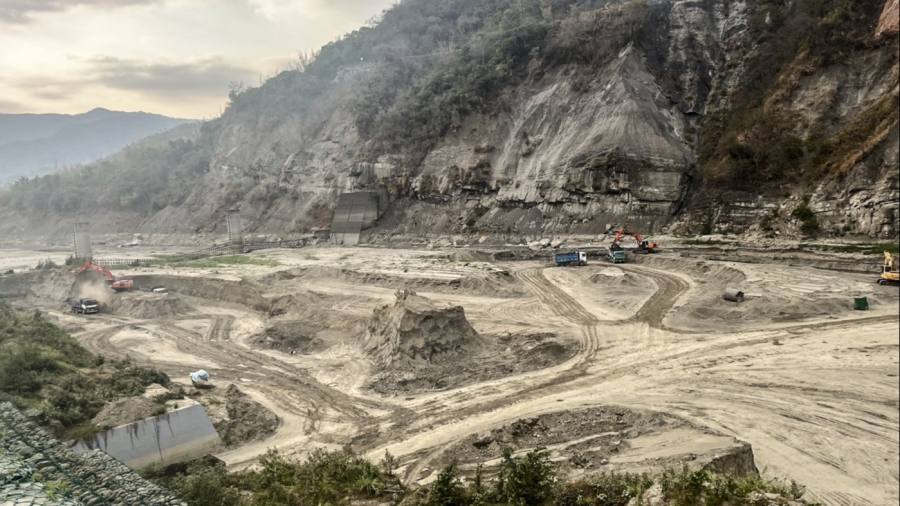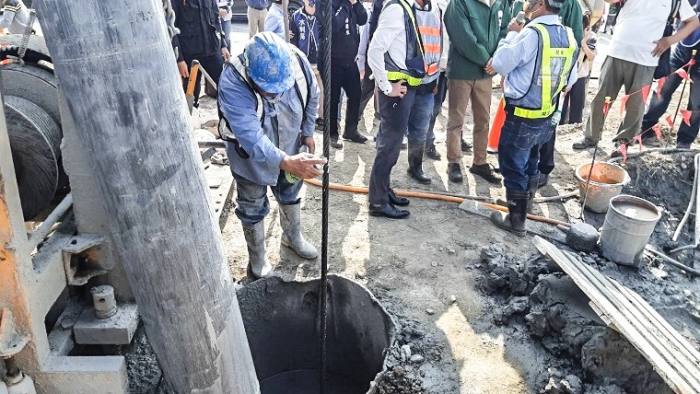
Taiwan, home to Asia’s biggest semiconductor industry, is once again bracing itself for water shortages less than two years after overcoming its worst drought in a century.
Chipmaking is a thirsty business. Take Taiwan Semiconductor Manufacturing Co, the world’s biggest contract chipmaker, for example. Its chip facilities in the Southern Taiwan Science Park alone consume 99,000 tonnes of water per day, according to the company’s latest figures. And as chip production techniques become more advanced, their water needs grow.
In addition, the island relies heavily on seasonal rainfall to fill its reservoirs — and climate change has made this a less reliable option.
This year, cities have already started preparing for constraints.
Kaohsiung, an emerging chip hub, and Tainan, where TSMC and United Microelectronics Corp both have chipmaking facilities, introduced water-saving measures this month, including reducing the pressure in public water supplies at night.
The Southern Taiwan Science Park has asked suppliers to cut their water use by 10 per cent and Kaohsiung will follow suit at its industrial zone from March 30.

This article is from Nikkei Asia, a global publication with a uniquely Asian perspective on politics, the economy, business and international affairs. Our own correspondents and outside commentators from around the world share their views on Asia, while our Asia300 section provides in-depth coverage of 300 of the biggest and fastest-growing listed companies from 11 economies outside Japan.
Subscribe | Group subscriptions
Such moves are aimed at avoiding a repeat of 2021, when drought was so severe that it disrupted manufacturing and agricultural activities across the island. Manufacturers such as TSMC resorted to rented water tanks and newly drilled wells to keep factories running at a time when the world was counting on Taiwan to ease an unprecedented chip shortage.
Keeping the supply of chips flowing is not just an economic imperative for Taiwan. Being a vital source of semiconductors makes the island politically important for allies such as the US in the face of Chinese aggression. If Taiwan’s chip output is dented, its “silicon shield” could also weaken.
And while electricity, land and talent are also critical elements needed to maintain Taiwan’s position in the global chip supply chain, securing enough water presents unique challenges.

Due to climate change and fewer typhoons passing by, the accumulated rainfall in southern Taiwanese cities such as Tainan and Pingtung has been about 40 per cent of an average year recently, the lowest level in three decades, according to Taiwan’s Water Resources Agency.
Taiwan’s summer typhoon season used to be a major source of water for the narrow island, but the last time a typhoon made landfall was in August 2019, according to data from the Central Weather Bureau.
The Tsengwen Reservoir, Taiwan’s biggest and a key water source for the Southern Taiwan Science Park, was filled to just 11.2 per cent of its effective capacity on March 17, according to publicly available government data. The level for the Nanhua Reservoir, which supplies Tainan and Kaohsiung, was 41.1 per cent.
The current drought in southern Taiwan is forecast to ease around May, according to the weather bureau.
In the meantime, the government and tech suppliers have been ramping up efforts to find and store more water. Having lived through 2021, many suppliers say they are prepared.
“TSMC has contingency plans for different water restriction stages and works with the government and private organisations to save water and develop water resources,” the chipmaking giant told Nikkei Asia. It said it had put conservation measures in place at its facilities in the Southern Taiwan Science Park, which include reducing water consumption and recycling more wastewater.

UMC told Nikkei Asia that it activated its water conservation contingency plans at its Tainan facility in January — ahead of the government’s request to reduce water use in March — to make sure its production will not be affected by the drought in southern Taiwan.
Display maker Innolux told Nikkei that it invested in new water conservation equipment at the end of 2022 when it saw the water situation in southern Taiwan was deteriorating. It also rented mobile water recycling equipment early this year to brace for the drought.
Delta Electronics, the world’s leading maker of power management products, said it started ramping up its water conservation efforts in 2015. Last year it conserved 6,000 tonnes of water at its facilities worldwide, including 700 tonnes in Taiwan, according to its unaudited report.
“Our water consumption is, of course, not comparable to semiconductors or optoelectronics makers, but we understand how crucial water resources are,” Delta spokesperson Jesse Chou told Nikkei Asia.
Delta’s facility in the Southern Taiwan Science Park is a certified “green” building that includes an underground retention basin and rainfall recycling equipment.
“We use [conserved and recycled water] every day. We also asked our suppliers to do more as part of the supply chain management,” Chou said. “We help them to set up water conservation [and] waste reduction goals and we help with educational training.”
Suppliers such as TSMC and Innolux have even built their own water recycling plants. TSMC’s water recycling plant in the Southern Taiwan Science Park went into operation in September 2022. The first such facility to support chipmaking, it can supply the chip plant’s daily water needs of 10,000 tonnes. The water recycling plant’s capacity could be increased to 36,000 tonnes daily by 2026.
The Taiwanese government, meanwhile, is trying to be creative in the face of opposition from residents to building additional reservoirs.
“We started contingency plans as early as August last year,” Lai Chien-hsin, director-general of the Water Resources Agency, told Nikkei Asia. “We are leveraging regional water resources to support the areas in need and we will drill 54 new wells . . . We can increase 136,000 tonnes of water daily around the end of April.”

Taiwan is also taking advantage of low water levels to clear accumulated silt from the bottom of several reservoirs, allowing the decades-old facilities to hold more water, the agency said.
For the longer term, Lai said, the government had several projects, including a 25km-long pipeline being built to draw water from the Shihmen Reservoir in New Taipei to Hsinchu. The project is set to be completed by 2026 and will help support the growing water needs of Hsinchu, the most important chipmaking hub in Taiwan, according to the official.
Wu Ray-shyan, executive vice-president of the National Central University and a hydrology and water resources expert, said water was a big challenge for Taiwan’s longer-term economic growth. “Climate change is real and we are seeing dramatic changes in rainfall every year,” he said.
Ironically, the island’s strategic importance as a chipmaking hub is exacerbating the problem of chronic water shortages.
“The pressure on water and energy supplies that Taiwan faces is much bigger than a couple of years ago,” Wu said. “We didn’t expect there would be so many Taiwanese suppliers coming back to the island to invest [amid the US-China trade war] . . . At least I didn’t calculate this factor in my forecasting model.”
A version of this article was first published by Nikkei Asia on March 24 2023. ©2023 Nikkei Inc. All rights reserved.

